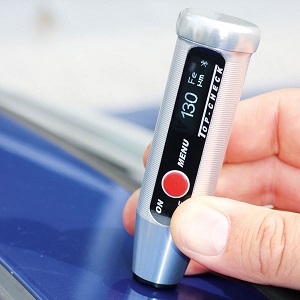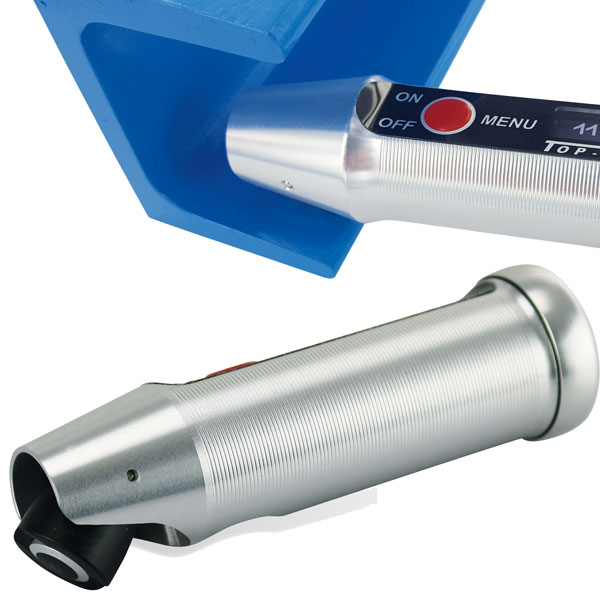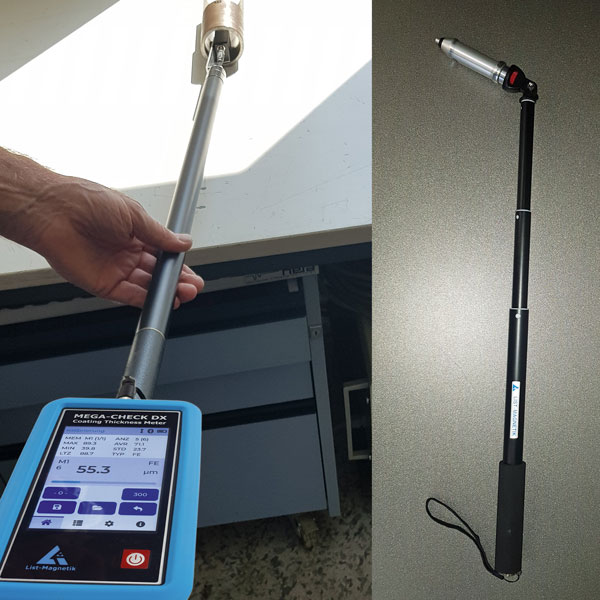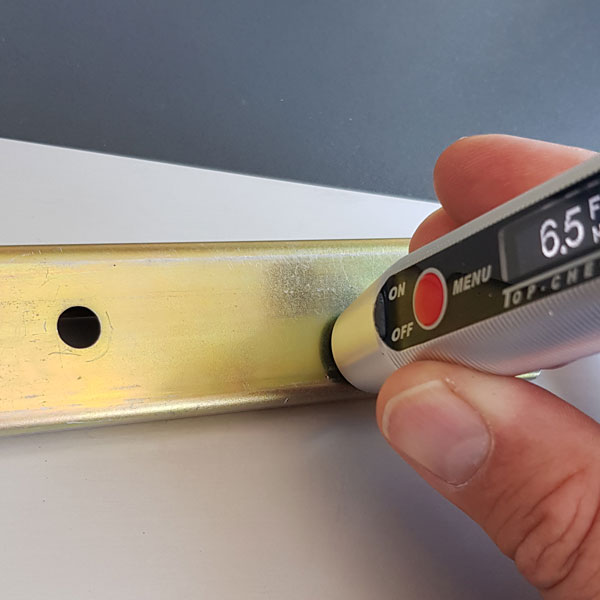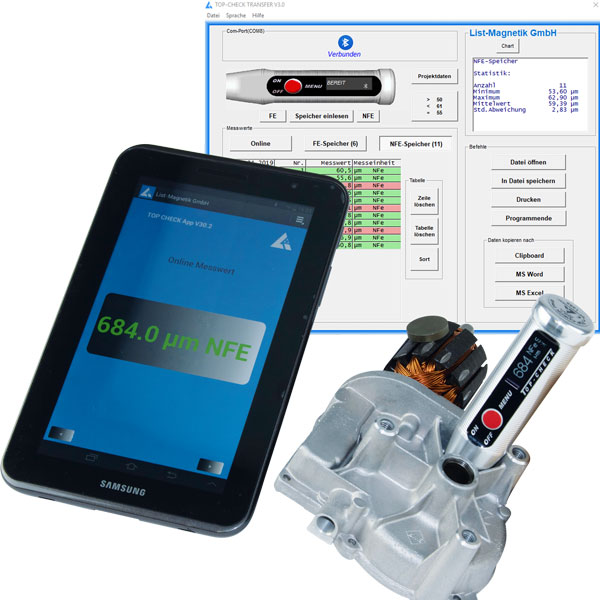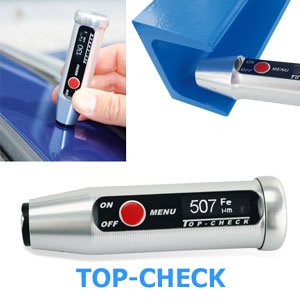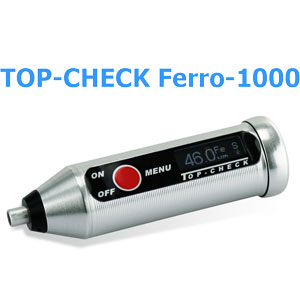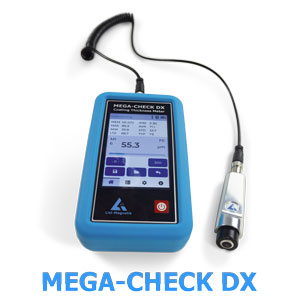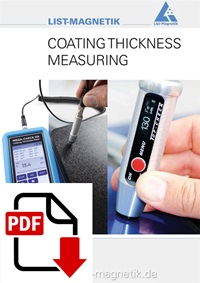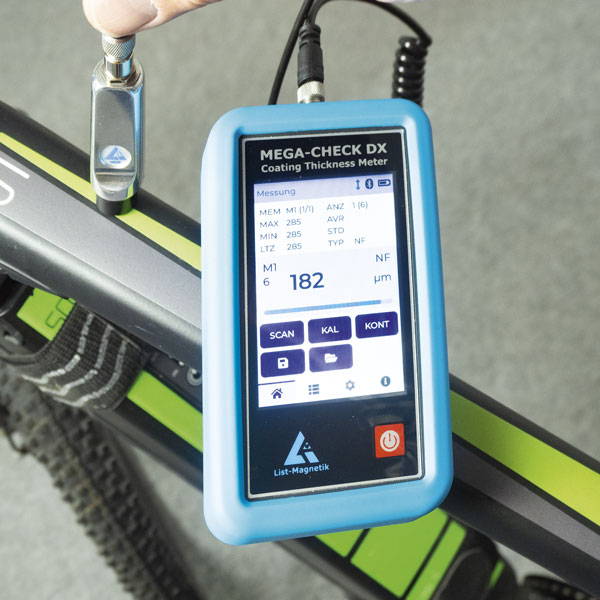Application of List-Magnetik coating thickness gauges
Which coating thicknesses can be measured?
- Measurement of a non-magnetizable layer over steel or iron (FE metal)
- Measurement of a non-metallic layer over a non-ferrous metal (NF metal)
- Measurement of a non-metallic layer over galvanized steel (combination of FE and NF metal) with the duplex measuring method of the MEGA-CHECK DX
- Measurement of rough, uneven layers using the scan measurement method of the MEGA-CHECK DX
FE-base material
All non-magnetic coatings such as varnish, paint, plastic, enamel, rubber, ceramic and galvanic coatings can be measured on iron and steel (FE).
NF-base material
On non-ferrous metals (NF) such as aluminum, brass, bronze, zinc, lead, copper or non-magnetic stainless steels, you can measure all non-conductive layers such as varnish, paint, plastic, anodizing, rubber.

Limits of coating thickness measurement
We limit ourselves to magnetic induction and eddy current techniques for coating thickness measurement. Therefore, we are not able to offer infrared coating thickness gauges for ceramics, glass, or plastics.
List-Magnetik coating thickness gauges cannot be used with these coatings:
Due to base material
- Non-metallic base material such as plastic, glass, GRP, carbon, ceramic
- Strongly magnetic base material
Due to coating material
- Nickel layer on steel, because nickel itself is magnetic.
- NF coating on NF base, e.g., galvanized aluminum, silver/gold on lead, because the eddy current technique cannot detect a difference between the base and the coating when measuring the coating thickness
- Wet or soft layers that would be changed by placing the probe on them
Due to the geometry
- Thin layers under 3 µm
- Layers on thin base material less than 0.5 mm
- small contact surfaces under a radius of 2 mm (FE) or 6 mm (NF)
- curved base under an outer radius/convex of 1 mm (FE) or 6 mm (NF) and under an inner radius/concave of 6 mm (FE) or 38 mm (NF)
Ambient conditions for coating thickness measurement
- The recommended temperature range is 0-50 °C
- The electronics are not designed for temperatures below 0° C
- The probe could be damaged at temperatures above 50°C
- • It is not possible to measure coating thickness under water using eddy current, as water itself is conductive
Coating thickness measurement for multilayer structures - galvanizing plus painting
With multilayer structures, two layers can be measured separately if a) the substrate is ferromagnetic, b) the first layer above the substrate is metallic-non-ferromagnetic and c) the top layer is non-conductive, for example paint or rubber, or a galvanized and then painted sheet steel.
With a single coating thickness measurement, the coating thickness of the paint and the galvanization are shown separately. The MEGA-CHECK DX coating thickness gauge offers duplex mode for this purpose.

Coating thickness measurement with rough coating or rough substrate
In general, the minimum value is important for rough coatings. If the layer is rough, measurements must be taken at several points and the result analyzed statistically (minimum, maximum, average). It is important to record the "peaks" and "valleys" of the coating with as few gaps as possible. Use the MEGA-CHECK DX coating thickness gauge to move the probe over the surface. MEGA-CHECK DX can perform this task in scan mode. As the probe moves over the surface, changes are detected and statistical values are determined automatically.

Measuring points that are difficult to reach, measuring in pipes
The pivoting probes of TOP-CHECK or MEGA-CHECK allow measurements to be taken at angles of up to 90°.
Special probes such as DX1-F or DX6-F are available for pipes or narrow openings. The pipe itself must not be too narrow, as the measurement is disturbed by reflections in narrow pipes.

Transfer data from the coating thickness gauge to the PC or app
Do you need to document or archive your series of measurements taken with the coating thickness gauge? Do you want to detect extreme values and carry out statistical evaluations? Are you measuring at a location where you cannot see the coating thickness gauge display at all? Then our Lima Connect app for Android / iOS and the Lima Connect PC application are the right tools for you.
The Android app can also be used for voice output of online measurements if you have neither your coating thickness gauge nor your mobile smartphone or tablet in view.
The applications make it possible to process or integrate coating thickness measurement series in Office applications. Integration into CAQ systems is also possible.
The apps are available free of charge in the Google Play Store, Apple App Store or List-Magnetik website.








